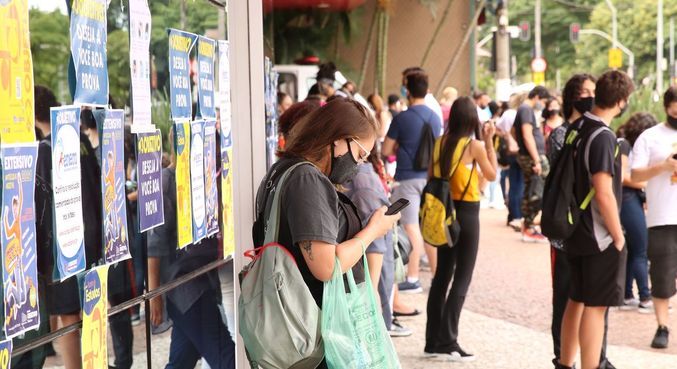[ad_1]
John Warner’s piece in IHE on Wednesday was excellent, even for him. It was about the baldly regressive distribution of resources within higher ed. Institutions with the wealthiest students get the most public funding; colleges that serve the poor receive far less. And it’s well known at this point that the distribution of security in institutions is markedly bifurcated, with the tenured receiving remarkable levels of protection and adjunct or contingent faculty making up the difference even while getting paid less. As an industry, we’re comfortable with hierarchy.
And yet, we’re also enthralled with the story of social mobility. Reformers beat their heads against walls wondering why seemingly obvious moves to enhance equity meet such resistance, often by people who say they embrace the goal.
Allowing for the obvious sociological weight of race and class, I see us flipping between a competitive vision and an inclusive one.
Are colleges supposed to be about talent scouting, or about raising the level of everyone?
The midcentury liberal answer was to deny the premise of the question. Clear away arbitrary distractions, this theory says, and let the competition happen on an even playing field. In this line of thought, there was no question that there would be winners and losers; the only challenge was ensuring that the fight was fair. By isolating talent from, say, race and sex, the greatest talents would rise to the top, and everyone else would find their level.
As naive as that looks now, in its time, it was the progressive alternative to history. Coeducation at scale is still only about fifty years old. As long as colleges were expanding opportunity, they could put off stickier questions. This is the same school of thought that distinguishes “due process” from equitable outcomes; as long as due process is met, the chips will fall where the chips will fall.
Midcentury liberalism gets dumped on by just about everybody. It’s an easy target. But there’s something to be said for, say, due process. Election officials who are willing to certify when the other party won, because that’s how the electoral cookie crumbled, value process over outcome. In that context, that’s a good thing. The presumption of innocence and the exclusionary rule are often caricatured as “technicalities” by the “tough-on-crime” crowd, but they matter a great deal. They help distinguish the rule of law from the rule of the strong. Both are rules, yes, but one forms the basis of ordered liberty and the other licenses tyranny.
Public higher education absolutely flourished under midcentury liberalism. Some of that was an accident of timing, but some of it came from an ideological affinity. They shared many of the same assumptions. They made sense to each other.
Over time, the larger political culture and higher education have moved in different directions. The larger culture has become much more market-based and more skeptical towards logics other than exchange. It has grown comfortable with extremes of wealth and poverty not seen since the Gilded Age. That has played out, ironically enough, in some of the ways that midcentury liberals advocated. It’s now socially toxic to assert hierarchy based on race, sex, or sexual orientation, but it’s entirely fine to build and defend hierarchies of wealth so extreme that earlier thinkers would have assumed would portend revolution.
Meanwhile, within higher education, we build status hierarchies with remarkable confidence even as we consider ourselves great equalizers. (Anyone who has ever worn a community college nametag to a disciplinary conference knows viscerally how this works.) Colleges now get “ranked” based on the salaries of their graduates. We try to create islands of equality, even while making students compete on GPA for scholarships. We build a staggeringly efficient funnel to winnow down student populations for the most exclusionary schools, many of which charge more than the median family income per year, then wonder if the student life programming there is too progressive. At the same time, we judge open-admissions colleges by their loan default rates, as if they had the option of excluding anyone risky, or as if they controlled the local cost of living.
Warner’s observation about the regressive allocation of resources within higher education is correct, as far as it goes, but it’s a symptom of something much larger. As a society, we really haven’t decided what equity means in a competitive economy. The “level playing field” only goes so far when different players have vastly different levels of preparation and equipment. Those tensions play out in higher education, among other places. A task that once was relatively straightforward is now much more complicated. But it’s also much more important. This is a conversation we, as an industry and as a society, need to have.
[ad_2]
Source Link






